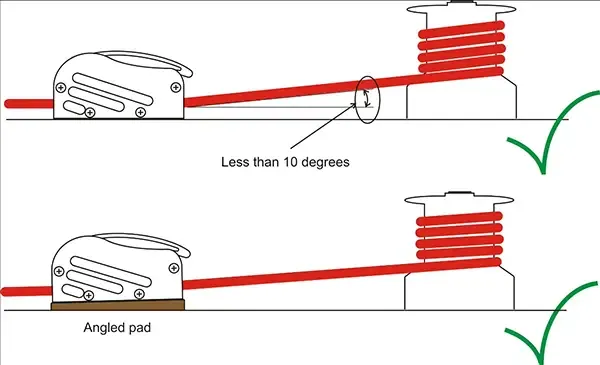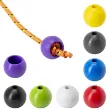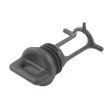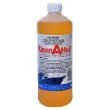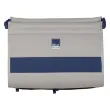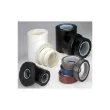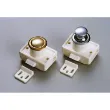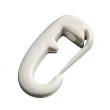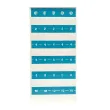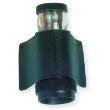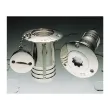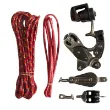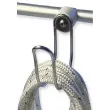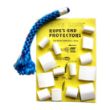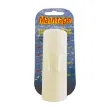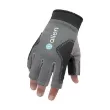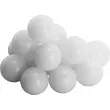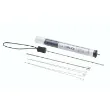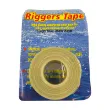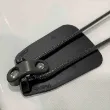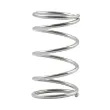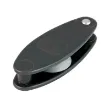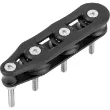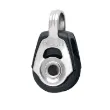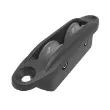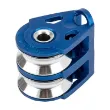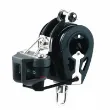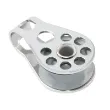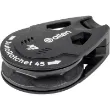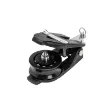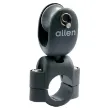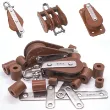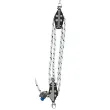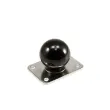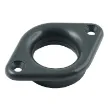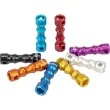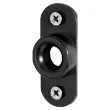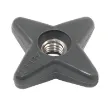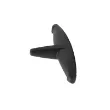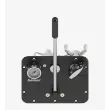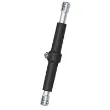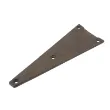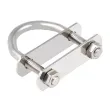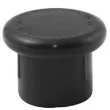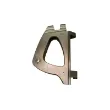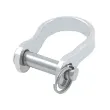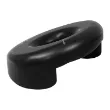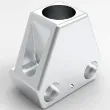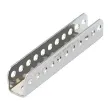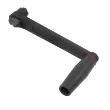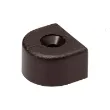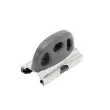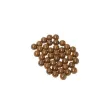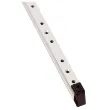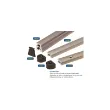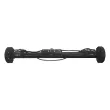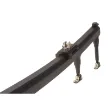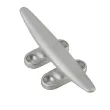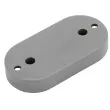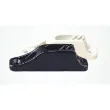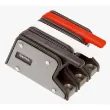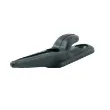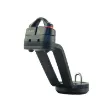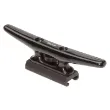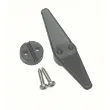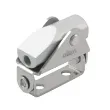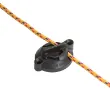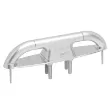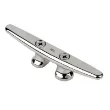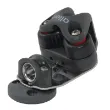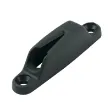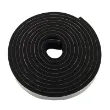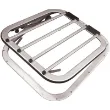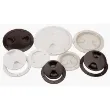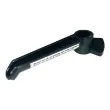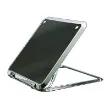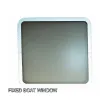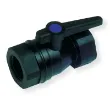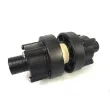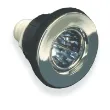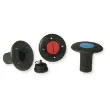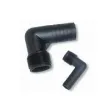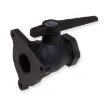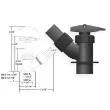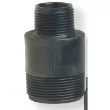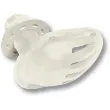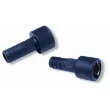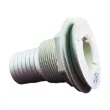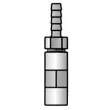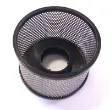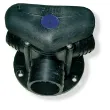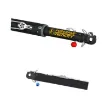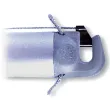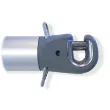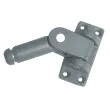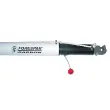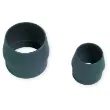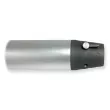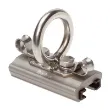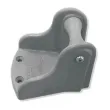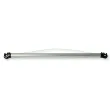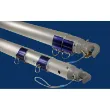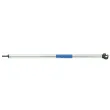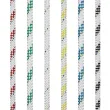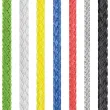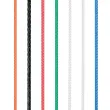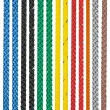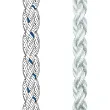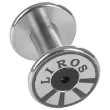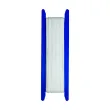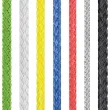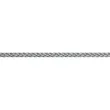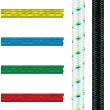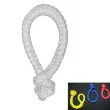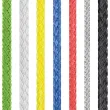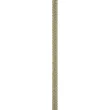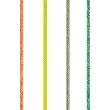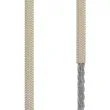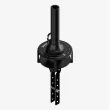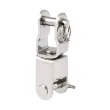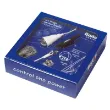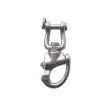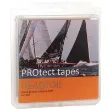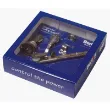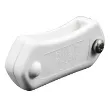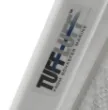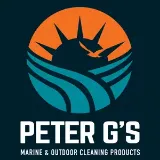Tips and techniques thanks to the team at Barton Marine
Blocks and sheaves
Blocks and mast sheaves use precise engineering and should be checked for potential wear and tear before you re-step the mast. Flush the blocks and mast sheaves through with fresh water if they have been exposed to the elements over the winter. If you are using a mild detergent to remove mould and mildew make sure it is ecologically friendly. Don’t use oil or grease as this attracts dirt and salt, which is abrasive.
Check for excessive movement on the bearings of both blocks and sheaves especially at the mast head. A broken mast sheave invites the halyard to jam itself at the worst possible moment, with a trip up the mast the only alternative to remove a sail. Replacement sheaves are available from Barton in a range of sizes or you can contact your mast manufacturer for replacements. If you can’t get the exact same diameter, that’s ok, as long as you make sure your replacement sheave is a tight fit widthways in the mast casing to prevent the mouseline jumping off the sheave and jamming.
A sign of blocks being overloaded is elongation around the fixing holes and shackles at the head of the blocks. If you are in any doubt, then it is best to replace it with a higher load block. This especially applies to mast head blocks which are much harder to inspect once the sailing season has started. Shackle pins are a must aloft and we recommend that they should be wire seized and taped or even cable tied to prevent unlocking. Take time to have a look at the condition of all your split rings and if they are not tightly coiled then replace them with new ones. Cover both sides of the split ring with a single piece of electrical or spreader tape and stick it onto itself as this will help prevent the split pin snagging in ropes and halyards.
When you are checking ball bearing blocks, the sheaves should spin freely and it is worth flushing them blocks through with fresh water. Any crunching or graunching noises or an uneven spin after flushing would suggest that the block has been overloaded. Ball bearing blocks are not suitable for high static loads, such as around the mast base so we’d recommend using a plain bearing block or a block with a higher rolling load rating.
Barton Winches
The Barton winch is really easy to maintain. Undo the drum spiral circlip (or locating screw on older models) and take off the drum before flushing through with warm fresh water. Gently agitate to remove any stubborn salt deposits, let it dry and give a light spray of WD40 to the gears. At this point you can remove all accessible pawls and springs. Any staining on the pawls can be removed with a proprietary household abrasive cleaner such as CIF with a scotchbrite pad. Flush with fresh water and leave to dry. On reassembly, add a squirt of WD40 to the springs and refit.

Mainsheet Traveller and Genoa cars
To look after the mainsheet traveller, rinse it thoroughly with a hose pipe and fresh water. It is important to really rinse the underbody where the ball bearings run in the car and along the track. You can use a mild detergent solution for stubborn salt deposits as it will not harm the layer of anodising. Take time to look at the state of the end mouldings on the traveller car and end fittings.
Crash gybes are usually the cause of fractures and it is useful to have spare end cap mouldings. To check for any fractures, remove the traveller car and use a short length of track to transfer the traveller car onto whilst it is being repaired.
Flush through the control line cam cleats with water under pressure, the cams should open and return freely, if not unscrew them and disassemble to check for broken return springs. Worn cam jaws reduce the efficiency of the cleat and will require replacing. Go for the highest specification cleat you can afford for a longer life, the Barton K Cam series are made from Dupont Kevlar. Whilst you are checking the cam cleats then have a look at the condition of the control line sheaves as they are easy to remove, inspect and replace.
Genoa Cars
When inspecting the Genoa Cars check for signs of excessive movement about the sheave bearing. A small amount of play is probably acceptable but any more than this may cause the sheave to lock up under load. Keep an eye on warning signs including excessive wear to one side of the sheave where it is not rotating. Sheaves can be replaced as long as the car has been regularly flushed through and looked after to reduce the risk of heavy corrosion of the aluminium around the spindle.
Rope clutches
Flush through with fresh water and let dry. We then recommend a silicone based grease for the handle and cam pivot points only. If the halyard or control line is slipping, try and look at the cam face inside for wear. The handles can also fail on older rope clutches; tell tale signs are fractures around the pivot point, repair or replace as necessary. Barton Marine offer spare handles and cams for you to install.
Make sure your lead deflection into the rope clutch is within 10 degrees, any more is putting excessive side load on the unit. You may need to purchase a Barton deck organiser to fit over the winter to address this.
